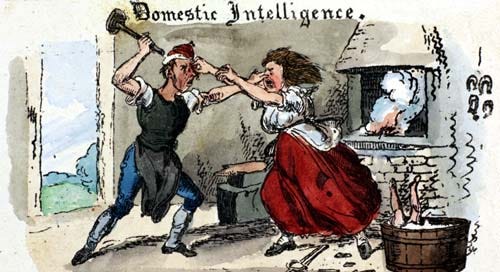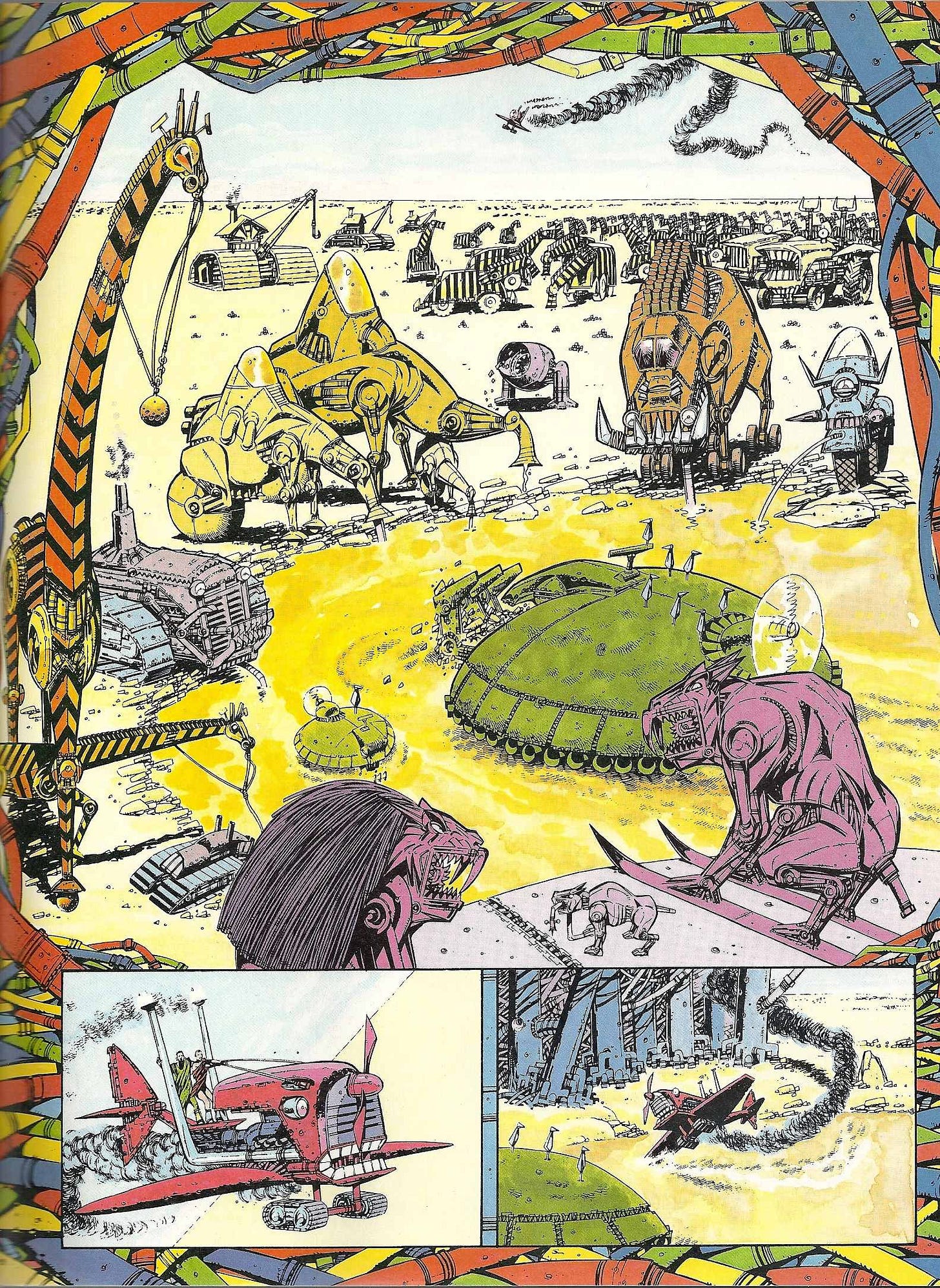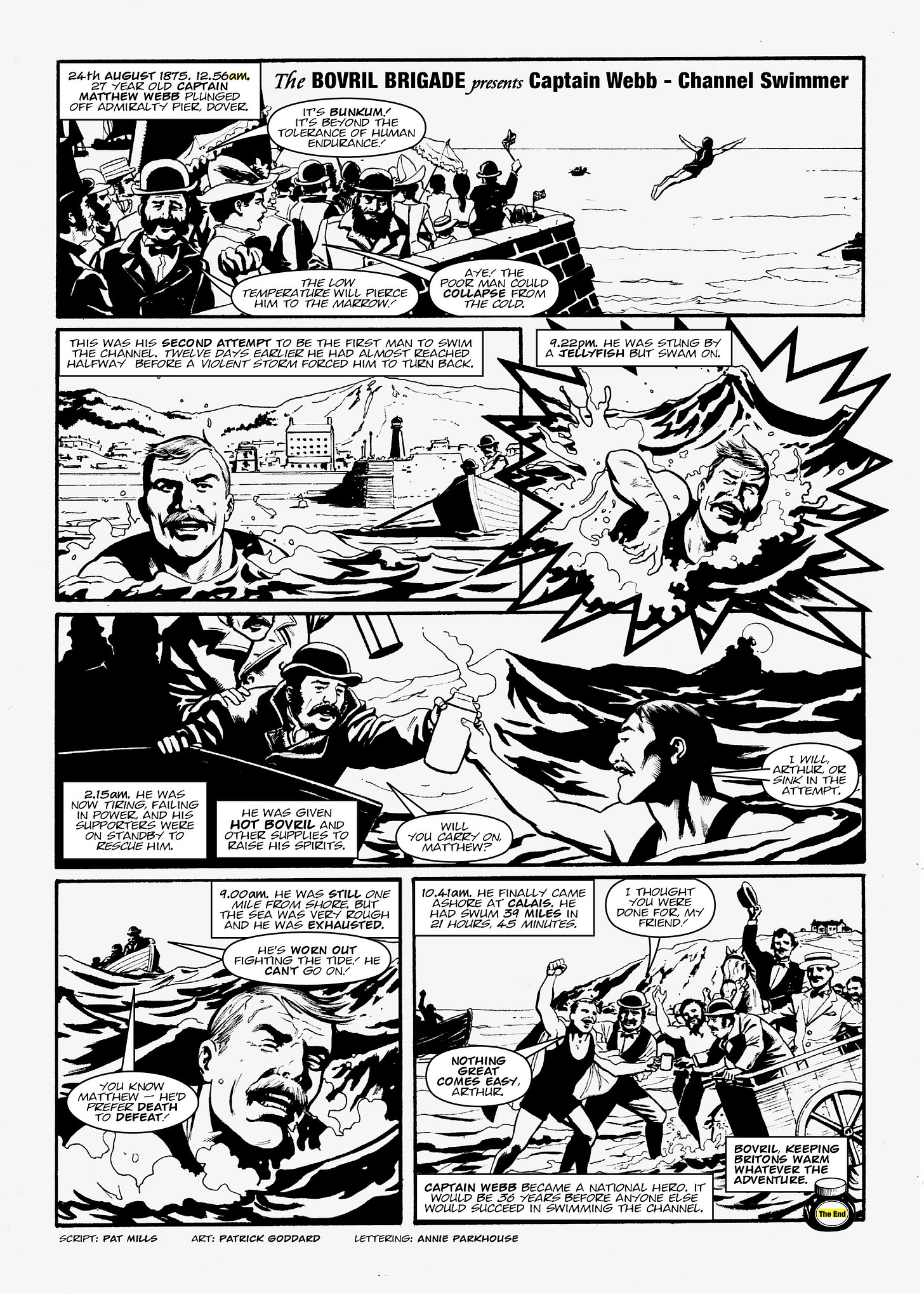Fat Comics
I believe Mick McMahon called them fat comics, or possibly fat comics with bits of cardboard around them, which still makes me chuckle.
Apologies again for writing yet another post that isn’t Matriarchy versus Patriarchy. It will return!
The definition of comic books comes up from time to time, so I thought I’d share my recollections of how comic books became ‘graphic novels’. I have reservations on that description of them. I believe Mick McMahon called them fat comics, or possibly fat comics with bits of cardboard around them, which still makes me chuckle. I’m not fond of the term ‘graphic novels’ because there’s something elitist about it, it will alienate younger comic readers, and it’s like aficionados are somewhat embarrassed by the industry’s ‘humble’ origins. That embarrassment I see as peculiarly English, and it goes back a long way. One established and successful comic book writer always said ‘I work in publishing’ rather than admit he was involved with comics. I suspect he is not alone.
Anyway, back to the history of fat comics.
Scotland is the true home of popular culture and they don’t have that very English snobbery about comics. I recall this well from when I worked for D.C. Thomson’s in Dundee as a trainee magazine journalist. I was so ignorant of the hierarchies of publishing, I originally thought they must be connected with Lord Thomson who owned The Times. Any residual English snobbery I might have had, they soon knocked out of me. Making the tea and writing the horoscopes for the Dundee Courier probably helped.
And it’s Scotland where comics first originated in the UK. According to Wikipedia, The Glasgow Looking Glass was the first mass-produced publication to tell stories using illustrations, and as such is regarded as the earliest comics magazine. The final issue was published on 3 April 1826.
In our own era it probably begins with Byron Preiss.
I recall Byron Preiss produced some very innovative books of heroic fantasy with lush soft pencil illustrations. He certainly paved the way for what was to follow. This is from his Wikipedia entry.
Byron Preiss (April 11, 1953 – July 9, 2005) was an American writer, editor, and publisher. He founded and served as president of Byron Preiss Visual Publications, and later of ibooks Inc. Many of his projects were in the forms of graphic novels, comics, illustrated books, and children's books. Beyond traditional printed books, Preiss frequently embraced emerging technologies, and was recognized as a pioneer in digital publishing and as among the first to publish in such formats as CD-ROM books and ebooks.
Bande dessinée were omnipresent in France, usually about 48 pages long, and I loved them, but we had nothing like them in the UK or the USA.
Then came A Contract with God and Other Tenement Stories, a graphic novel by American cartoonist Will Eisner published in 1978. This is generally recognised as the first ‘fat comic’ and it’s superb. I recall going into the Sign of the Fish Christian bookshop in Colchester and the owner telling me – with some glee – how his fellow Christians in other bookshops ordered the book because of the title, unaware that its content was decidedly unchristian! I’m still baffled as to why I would go into a Christian bookshop, but I can only recall the anecdote.
This was followed by Howard Chaykin, who illustrated Swords of Heaven, The Flowers of Hell, by Michael Moorcock in 1979. Once again, it’s a great book and it showed us all the future.
It was probably in 1982 that the UK SSI – Society of Strip Illustration – was in existence and Raymond Briggs, renowned for When the Wind Blows – an excellent fat comic – went along to one of their meetings and the SSI didn’t know who he was! They asked him, with a certain aloofness that is so typical of English comic people, what exactly had he drawn?
By now, of course, Titan Books were producing their collections from 2000AD and also Charley’s War. I’m not sure how they were described – they were hardly fat – maybe ‘comic albums’ or what’s wrong with just calling them simply ‘comic books’? Except that it has a rather American meaning, I guess.
Marvel produced collections of their monthly issues and my recollection is they diluted the value of collections because just about everything had bits of cardboard around them and were sold at inflated prices. I believe they were defined as trade paperbacks.
DC Comics had a ‘comic album’ series which included Metalzoic by me and Kevin O’Neill, and that line didn’t seem to work. They were seen as too big for American bookshelves and I recall UK comic publishers cravenly reducing their books to American sizes, which didn’t really work either.
Jumping forward in time, today there are Manga fat comics which sell extremely well in bookshops. And personal-story fat comics, which often get made into movies or TV series. Heartstopper comes to mind, so I think that’s an excellent way forward for new creators.
Rebellion once did some very popular, pulp fiction editions of 2000AD stories. I believe Keith Richardson was the driving force behind them and I always admired his McMahon-like attitude to the industry. Today, they’re producing some truly beautiful and expensive books which include my Nemesis The Warlock, Sláine, and ABC Warriors, because they’re best-sellers. They’re really fantastic, but I’m going to avoid describing them as ‘prestige editions’ because it’s perilously close to the GN word. But I still feel a pang that they no longer seem to be doing the cheap and cheerful editions for popular lesser-sellers, like Savage and Flesh.
Today, GNs can be an excuse for elitism and poor quality story and art, which can be excused by snobs as ‘art house’. As the French like to say, the smaller the audience the better the product. The kind of thing The Guardian is often associated with. I was involved with one such book, and I was recently going to give a copy to a fan of regular comics as a kind of pisstake that would appeal to our anti-snobbery sense of humour. But when I looked at it, it was so awful and I was so embarrassed by it, I didn’t dare show him, in case I lost all credibility for being associated with it.
Usually, in my anti-snobbery views of comics I’m overshadowed by Mick McMahon, who is even more punk in his attitude than me. Thus, I recall he visited me in Colchester and saw the gleaming white drawing board of Angela Kincaid (my ex), which was very classy and expensive, because it had to suit our open-plan lounge.
Mick took one look and said that he always drew on a kitchen table!
But a few years ago I went to the London Book Fair and met a leading light of the elitist English comic scene. He asked me when I was going to write (and, I kid you not, his voice literally changed and trembled with reverence) a… graphic novel?
I said I was working on something very important right now.
‘What is that?’ he asked curiously, doubtless expecting some deeply meaningful historic or intimate autobiography.
‘I’m working on a Bovril comic,’ I replied proudly.
He looked taken aback. And you may well be, too. But I know Mick McMahon would be envious of my response.
I think I trumped you that time, Mick!
And, on that note, I think it’s time for me to get back to writing my next fat comic.








I think they'll eventually do a collection of Flesh again - because there's so much film interest in the IP. And there's another Jurassic film due out. I regularly get film companies asking if the rights are available. At one stage they weren't when there were abortive plans to make it as a tv series in house. Possibly the rights are available now. But why would they tell me? I'm only the effing creator
Yeah, I have very limited shelf space, too. I'm reminded of a well known comic fan and publisher who kept physical copies of comic books in his loft. According to one story, the floorboards gave way under the great weight and the books crashed down into the floor below.